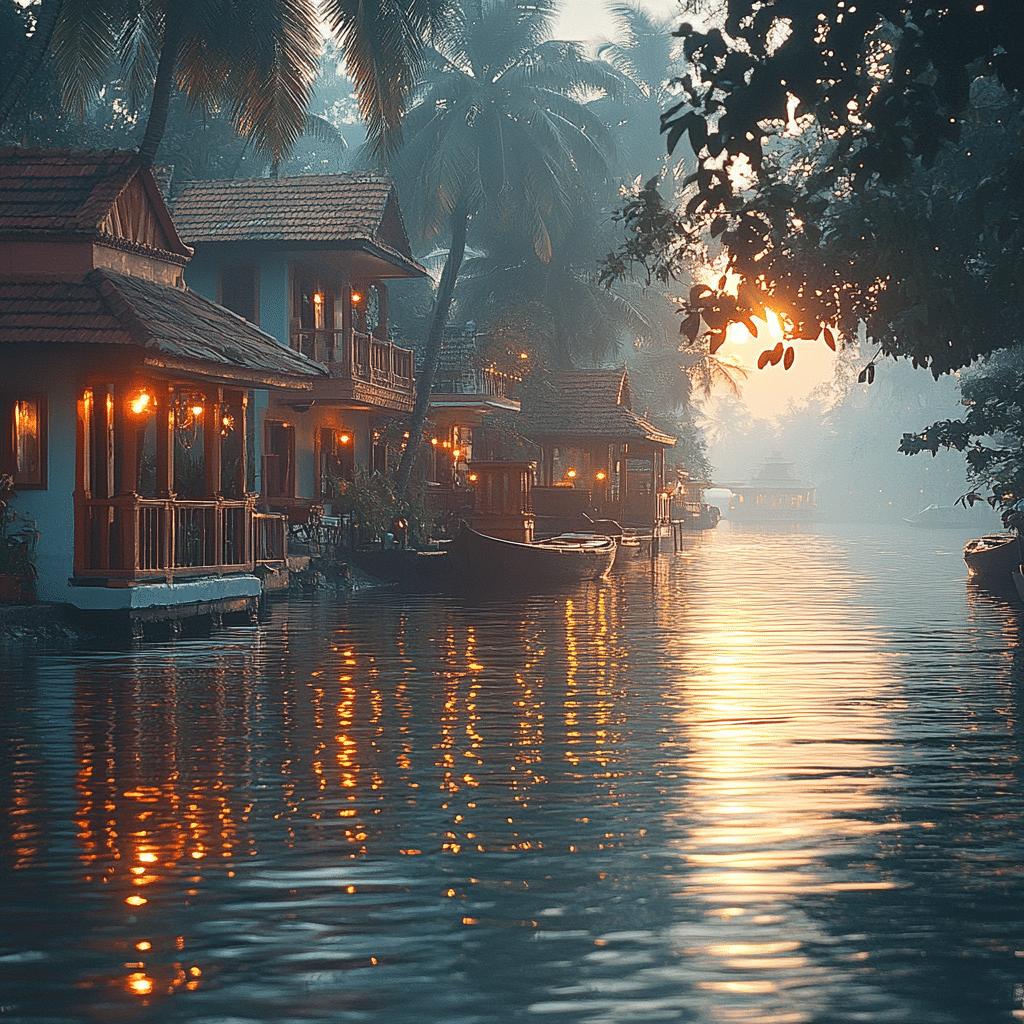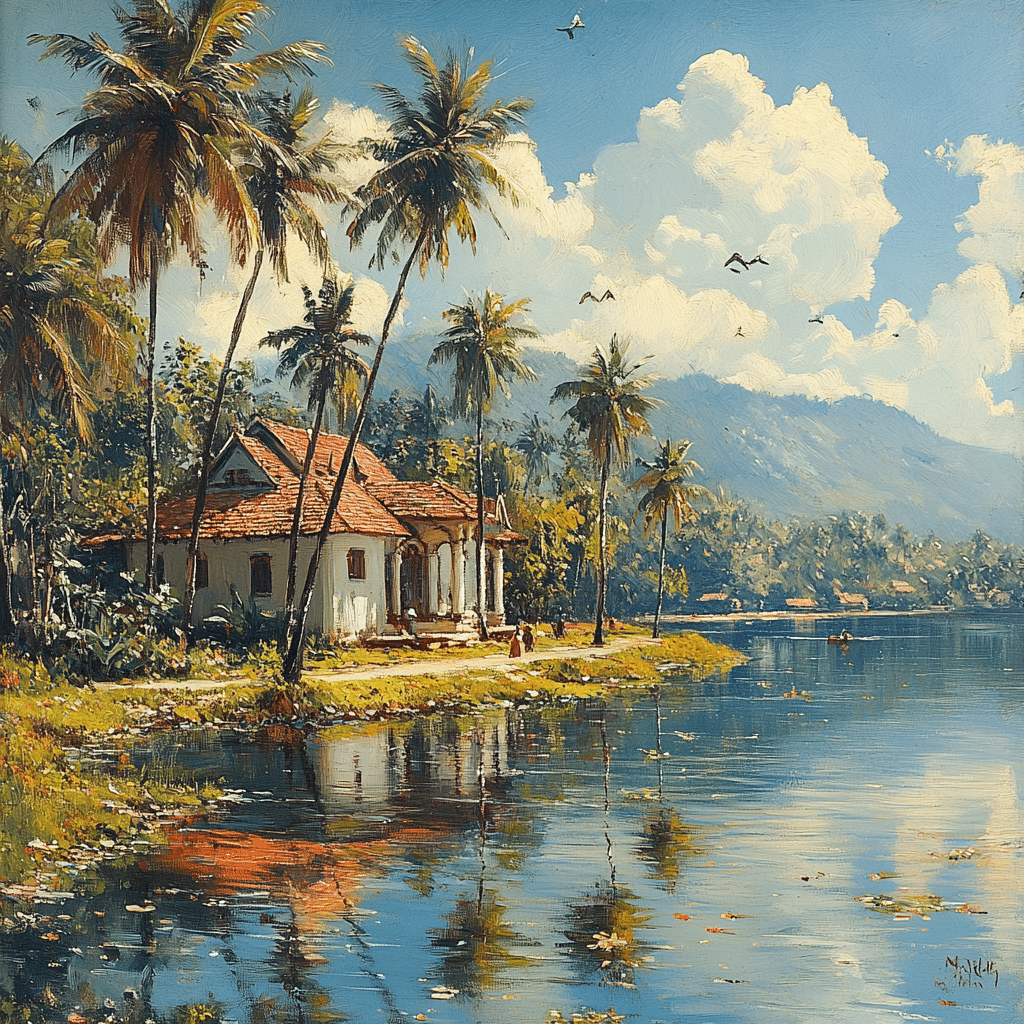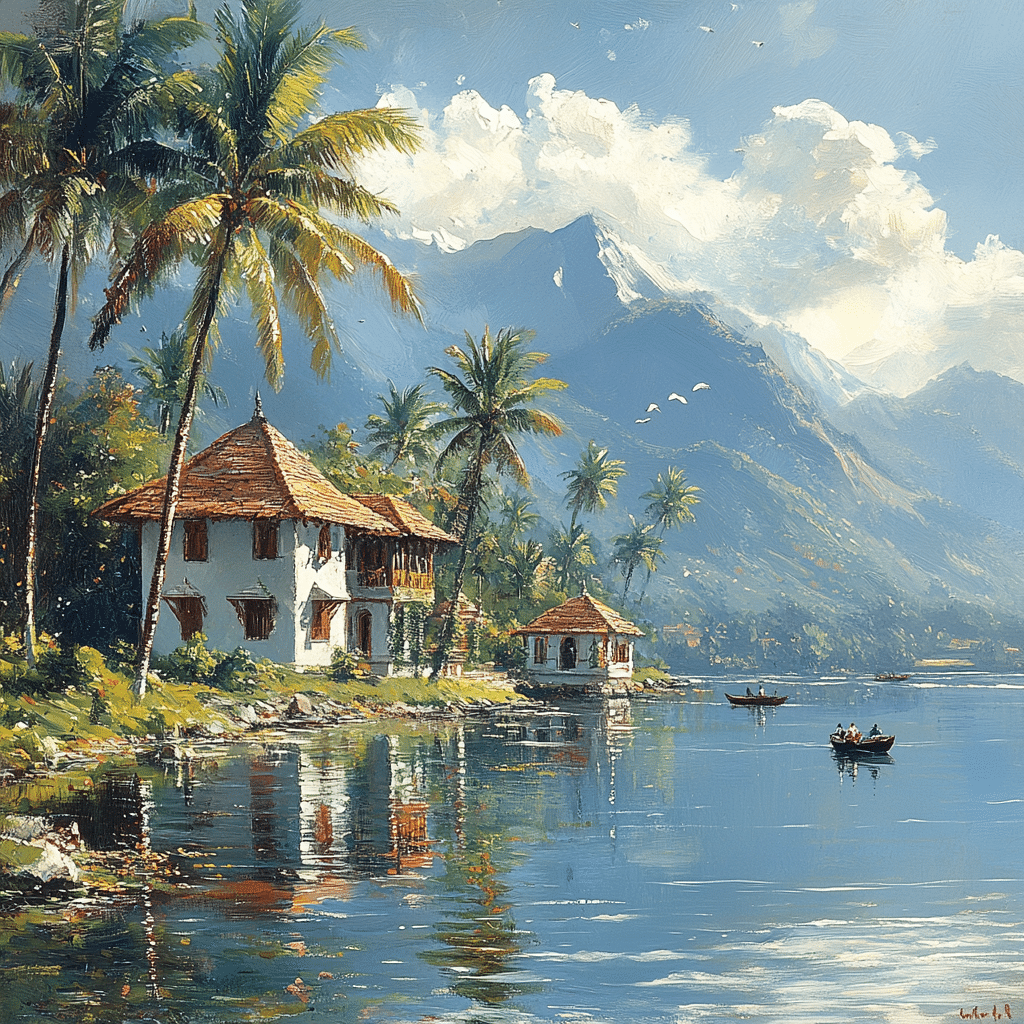Kerala and India are splendid in their diversity, with Kerala often referred to as “God’s Own Country.” Nestled in the southwestern part of India, this state is a vibrant mix of lush landscapes, serene backwaters, and a rich tapestry of cultural heritage. The enchanting beauty of Kerala reflects a microcosm of the broader Indian experience, offering a glimpse into how various traditions, languages, and practices interweave harmoniously. Set against the backdrop of the Western Ghats, Kerala has welcomed numerous influences through its extensive coastline, creating a unique blend that captivates visitors from all over the globe.
The significance of Kerala to Indian culture cannot be overstated. Officially formed on November 1, 1956, through the States Reorganisation Act, Kerala united Malayalam-speaking regions such as Cochin and Travancore into a state that represents the essence of India’s cultural and historic richness. From ancient temples to contemporary art forms, Kerala stands as a testament to how centuries of social evolution can contribute to an extraordinary cultural identity. Let’s explore the top treasures of this beautiful state and how they contribute to the cultural landscape of India as a whole.
Top 7 Cultural Treasures of Kerala and India You Must Experience
2.1 Kathakali: The Art of Storytelling
Kathakali is more than just a dance; it’s an experience that embodies the heart of Kerala and India. This traditional dance-drama combines stunning makeup, intricate costumes, and expressive gestures that narrate stories from Hindu epics like the Mahabharata and Ramayana. The performances can last for several hours, captivating audiences with their intensity and beauty. Attending a Kathakali performance is like diving deep into the cultural richness that forms the backbone of Kerala’s artistic landscape.
2.2 The Spice Plantations of Wayanad: A Culinary Journey
Wayanad is renowned for its sprawling spice plantations, showcasing Kerala’s central role in India’s spice trade. The intoxicating aromas of cardamom, pepper, and vanilla fill the air, crafting a landscape that is both visually appealing and flavorful. Visiting these plantations provides insights into sustainable farming practices that balance environmental conservation with economic growth. Tourists not only immerse themselves in the beauty of these lands but also gain a deeper appreciation of Kerala’s agricultural heritage and culinary traditions.
2.3 The Handicrafts of Kasargod: A Heritage Craft
Kasargod stands out for its distinctive handicrafts, showcasing the art and craftsmanship of local artisans. The traditional Kasavu sarees made from handloom are particularly celebrated, symbolizing the region’s rich textile heritage. Additionally, intricate wood carvings reflect the meticulous skills of local craftsmen. These handicrafts serve not just the local economy but also contribute to India’s mesmerizing art scene, ensuring that age-old techniques and styles are preserved for future generations.
2.4 The Backwaters: Nature’s Paradise
Kerala’s backwaters are famously known for their striking beauty and ecological significance. This interconnected network of lagoons, lakes, and canals serves as a haven for various wildlife. The experience of cruising in a houseboat through these tranquil waters allows visitors to engage with local culture firsthand. Here, one can observe traditional fishing techniques and the local lifestyle that flourishes along the banks. Importantly, eco-tourism is promoted in this region, highlighting a responsible approach to preserving nature while enriching local communities.
2.5 Onam Festival: A Celebration of Unity
Onam is not just a harvest festival; it’s a spectacular illustration of Kerala’s unity in diversity. Celebrated with vibrant activities, it embodies the spirit of inclusivity, showcasing different musical forms, dance performances, and a grand feast known as the Onam Sadhya, featuring over 20 authentic dishes. This festival transcends individual communities and brings together people from various backgrounds, making it an embodiment of the shared heritage that unites Kerala and India.
2.6 The Sacred Groves: Biodiversity Hotspots
The sacred groves in Kerala serve as invaluable ecological and cultural sites, preserving diverse flora and fauna while reflecting local spirituality. Embedded deeply in the beliefs of various communities, these groves are significant for biodiversity conservation. They remind us of the intersection between indigenous values and environmental practices, showcasing a model for balanced coexistence which can inspire similar efforts throughout India.
2.7 Ayurveda: A Journey into Holistic Healing
Kerala is globally recognized as the home of Ayurveda, the ancient Indian healing system that emphasizes holistic wellness. Tourists flock to various Ayurvedic centers in Kerala, seeking rejuvenation and balance through traditional practices. This focus not only supports health and well-being but also enhances Kerala’s reputation in the global wellness industry. The nurturing environment fosters a commitment to preserving these ancient practices while integrating them into modern lifestyles.

The Interplay of Culture and Nature in Kerala and India
In Kerala, the harmonious relationship between culture and nature is strikingly evident. The lush landscapes and sacred ties to the land deeply influence local traditions. Rituals that take place during festivals and daily life are often tied to natural cycles, showcasing how residents draw inspiration from their surroundings. This intersection is vital for conservation efforts, as Kerala exemplifies the potential for sustainable tourism that respects environmental balance while enriching local communities.
The Global Impact of Kerala and India’s Cultural Heritage
As global interest in Kerala and India’s culture continues to grow, the impacts of globalization are becoming increasingly noticeable. Initiatives such as the Kerala Tourism campaign introduce the state’s rich heritage to a worldwide audience while grappling with the challenges of modernization. There’s a delicate equilibrium between preserving traditional practices and adapting to contemporary trends, and Kerala’s identity serves as a case study for many regions worldwide. That’s not a simple task, but it showcases the vibrant spirit of cultural exchange in the modern world.

Reflections on the Future of Kerala and India’s Cultural Landscape
Looking ahead, the future of Kerala and India’s cultural identity remains vibrant yet challenged by rapid changes. While festivals like Onam continue to evolve, upcoming sustainability initiatives aim to protect the environment and preserve cultural practices. Collaborations within the arts and tourism sectors highlight a commitment to safeguarding these traditions while embracing growth, revealing Kerala’s resilience. As the landscape of Kerala and India transforms, the core of its culture will undoubtedly adapt, reflecting a legacy that is both ancient and contemporary.
In conclusion, Kerala and India emerge not just as a destination but as a narrative, rich with stories and experiences waiting to be explored. The blend of culture, breathtaking natural beauty, and sustainable practices makes Kerala a vital part of India’s cultural mosaic. It’s a place that invites exploration, understanding, and appreciation, serving as a beacon of inspiration for both visitors and locals alike. Whether you’re delving into the depths of Ayurvedic healing or cruising through serene backwaters, Kerala truly embodies what it means to celebrate life’s diverse offerings.
Exploring Kerala and India: Culture and Trivia
Kerala’s Nature and Celebrations
Kerala and India are famous for their lush landscapes and festive spirit. Did you know that Kerala has over 900 km of backwaters? These serene waterways have become a premier tourist attraction, drawing visitors eager to explore their beauty. Interestingly, the well-known “houseboat” experience is unique to this region, offering travelers a chance to relax while gliding through tranquil waters. Speaking of unique experiences, if you’re curious about styles, you might want to check out the latest trends in Korean haircuts for men, which can often complement the vibrant attire of Kerala.
Festivals and Art Forms
Cultural festivals in Kerala are a sight to behold. With events like Onam and Vishu, the locals celebrate with colorful rangolis, delicious feasts, and energetic dances. Meanwhile, India boasts a diversity of art forms. From Kathakali, a classical dance-drama, to the rhythmic beats of Theyyam, these performances showcase rich storytelling. And speaking of storytelling, the way in which Kelly Knievel narrates his father’s legacy can be just as captivating as a performance in Kerala. A visit to this enchanting region feels like stepping into a storybook itself.
Culinary Delights and Nature Reserves
When you think about Kerala and India, think about the delectable cuisine! The dishes here are not only flavorful but are often made with fresh, local ingredients. For instance, the famous Kerala Sadya served on a banana leaf is a culinary delight you wouldn’t want to miss. Spirits might soar even higher knowing there’s easy access to scenic spots like the Periyar Wildlife Sanctuary, where you can encounter magnificent wildlife. On a different note, if you’re pondering about finance trends, you might find yourself wondering, Did interest rates go up today? But all that aside, delving into the natural beauty and culture of Kerala and India might give you a different kind of perspective on what really matters.
So, whether you find yourself captivated by Kerri Quinns insights or are just here to soak up the golden beaches, diving into the culture and nature of Kerala and India is sure to be an unforgettable adventure.

How is Kerala different from India?
Kerala stands out from the rest of India due to its unique cultural blend that includes diverse religious traditions, languages, and customs, influenced by its long coastline and foreign interactions over centuries.
Is Kerala known as of India?
Yes, Kerala is indeed a well-known state in India, famous for its natural beauty, rich heritage, and cultural practices. It’s often referred to as “God’s Own Country” for its stunning landscapes and vibrant traditions.
Why is Kerala famous in India?
Kerala is famous in India for its breathtaking backwaters, lush tea plantations, beautiful beaches, and cultural experiences such as Ayurvedic treatments and colorful festivals like Onam, making it a popular tourist destination.
How did Kerala became part of India?
Kerala became part of India on November 1, 1956, when the States Reorganisation Act was passed, merging Malayalam-speaking regions from the previous states of Cochin, Malabar, South Canara, and Travancore.
Is Kerala in India or Pakistan?
Kerala is in India, located along the southwestern coast, bordered by the Arabian Sea.
Is Kerala rich or poor state in India?
While Kerala is often perceived as a relatively progressive state with strong social indicators, income inequality exists, and it has areas of both wealth and poverty, making it a mixed economy state.
What language is spoken in Kerala?
The official language spoken in Kerala is Malayalam, which is part of the Dravidian language family and widely used in the state.
What do you call a person from Kerala?
People from Kerala are commonly referred to as “Keralites,” reflecting their connection to the state and its culture.
What are Indians from Kerala called?
Indians from Kerala are indeed called “Keralites,” and they take pride in their unique traditions, rituals, and cultural heritage.
Which food is eaten in Kerala?
A popular dish in Kerala is idli sambar, which consists of fermented rice cakes served with a tangy lentil-based curry flavored with spices and vegetables.
Why Kerala people are special?
The people of Kerala are special for their strong sense of cultural identity, deep-rooted traditions, and their commitment to preserving and celebrating their heritage.
Which city has beautiful girls in Kerala?
While the beauty of individuals can be subjective, many say that cities like Kochi and Thiruvananthapuram boast lovely women, accentuating the rich cultural diversity of the state.
Why is Kerala different from the rest of India?
Kerala is different from the rest of India due to its high literacy rates, social equality efforts, and unique customs, making it a standout example of cultural harmony in the country.
Is Kerala a good place to live?
Living in Kerala is often considered great due to its natural beauty, rich culture, high literacy, and good healthcare, but like anywhere, experiences may vary based on individual preferences.
What is the main source of income in Kerala?
The main source of income in Kerala comes from tourism, agriculture, and remittances from Keralites working abroad, particularly in the Gulf countries.



